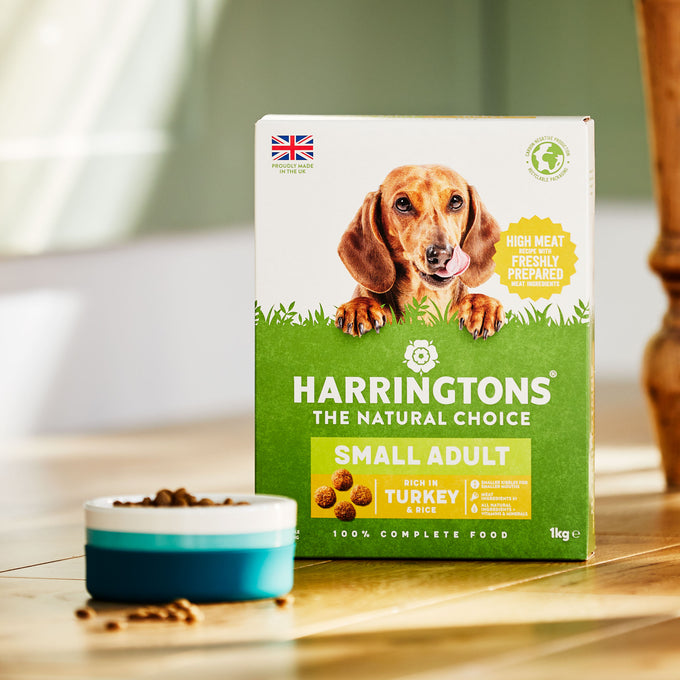We know — puppies are just adorable. Everything about them is cute!
Their tiny tails that whip back and forth, the little squeaky sounds they make and the way they burrow into you to find a cosy snoozing spot.
Despite what their innocent, big, brown eyes might try to tell you, your pup can also be the cause of the path of destruction that rips through your house like a tornado.
From chewed furniture and half-eaten shoes, to torn open cushions and wee-stained bedding. From an angelic ball of fluff, to a tyrant causing uncontrolled havoc in every room of the house.
So, how do you manage a naughty puppy and put a stop to their mischievous behaviour?
Start early
It’s much easier to train a puppy to develop good habits from the start than it is to try and get them to unlearn naughty behaviour as they get older.
Therefore, it’s important you start teaching your puppy the right way of doing things from day one.
From toilet training and bedtime routines, to socialising with other dogs and learning the basics of sit, wait and heel, there are lots of things for your new pup to learn which we discuss at Puppy Club!
Be consistent
Learning how to behave properly takes time and patience, especially with all the fun distractions of a new home, so don’t be discouraged if your puppy doesn’t master something straight away.
As creatures of habit, dogs thrive off of routine and structure, so letting them get away with naughty behaviours ‘just this once’ can be a step backwards in their progress.
With time and consistency, they’ll soon be toilet trained, well-socialised members of the family — but it’s up to you to put the work in and teach them the right way of doing things by reinforcing good habits.
Reward good behaviours
The most effective way to encourage the development of good habits is by rewarding your pup when they do something right.
Giving them lots of praise and small treats (of course, be mindful of how many, and account for the additional calories) is a great way to encourage good behaviour.
Common dog behaviour problems and how to handle them
Nipping or chewing
Biting is normal puppy behaviour — much like babies, they explore a lot of the world using their mouth. It’s up to you to teach them not to nip people as it can become a more dangerous behaviour in older dogs.
Rather than pulling your hand away quickly, which can make it seem like a fun game, calmly say “no” or “ouch” and remove your hand gently.
If your dog is chewing things like the carpet, furniture or shoes, it can mean they’re teething. A firm “no” should be enough to get them to pause, then give them something they are allowed to munch on, like a chew toy.
If they’re chewing on things whilst you’re out and about, it can be down to nerves and anxiety, in which case try leaving a fun puzzle game that distracts them and leave the radio on as some calming background noise.
You can read more tips for reducing separation anxiety in another of our Puppy Club blogs.
Barking
Dogs use barking as their method of communication — you can’t expect your pooch to remain forever silent!
However, excessive barking can be problematic and disruptive, so it’s important you figure out what is causing them to try and get your attention and address it.
Perhaps they’re letting you know they need the toilet, in which case let them out or take them for a walk.
If it’s out of boredom and they’re just trying to get your attention to play with you, try giving them a time consuming toy to play with, like a conch with a treat in it, or a squeaky toy.
If you find your pup is barking at people when they come to the house or out on walks, a firm “no” tells them that it’s not acceptable behaviour, and putting them in timeout for a few minutes will let them calm down.
Weeing or pooing in the house
As frustrating as it is to have to clean up an unexpected surprise from your pup, it’s important to remember it’s not their fault, especially during the toilet-training process where they’re bound to have a few accidents!
Instead of getting angry and shouting at them — which can make them associate going to the toilet with fear and shame — be sure you’re consistently taking them out to relieve themselves and rewarding them when they do their business outside.
It takes a bit of time, but they’ll get the hang of it if you stick with it.
How not to handle bad dog behaviour
No matter how naughty your pup’s behaviour, never use physical aggression or violence to discipline them. Not only is it cruel and unnecessary, it also can lead to your dog becoming fearful of you, as well as defensive, aggressive and unpredictable in social situations.
Instead, promptly after the bad behaviour, give your pooch a time out in another room or in their crate for a few minutes so they can calm down and associate that bad behaviour with a consequence. When using time outs, do not leave your pup for a long period of time.
Also, never scream or shout at your puppy if they’ve done something wrong. A firm “no” should be enough, whilst ensuring you use lots of positive reinforcement for good behaviours, teaching them what it is they should be doing.
As with human teenagers, sometimes your pooch will try to test the boundaries as they get older to see what they can get away with.
The main thing is to be consistent with rewarding good behaviours and discouraging bad habits — your pup will follow your lead and their behaviour will ultimately reflect your efforts of teaching them right from wrong.

